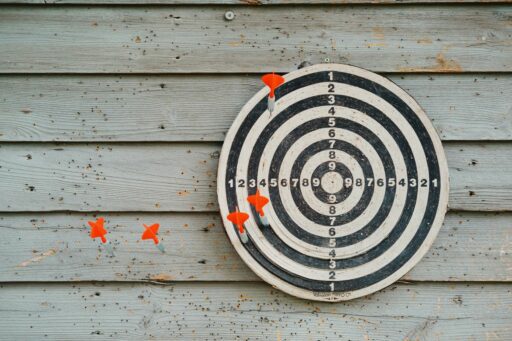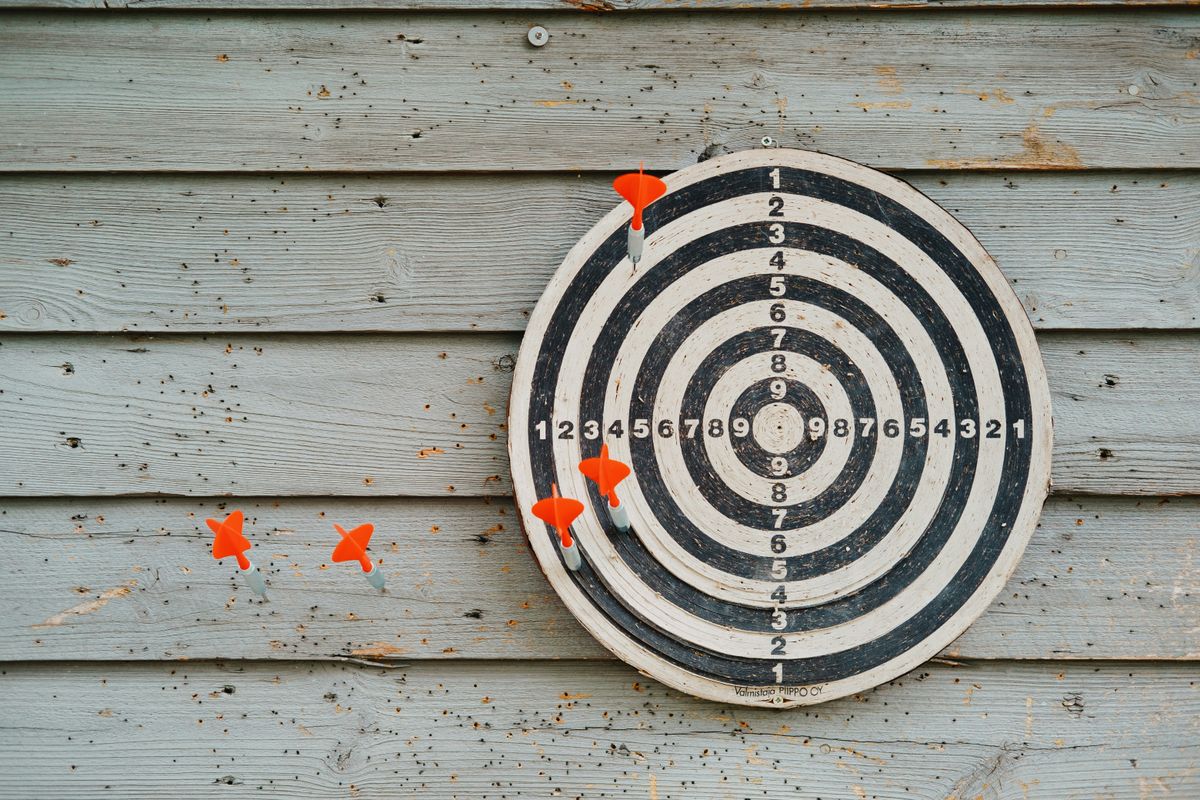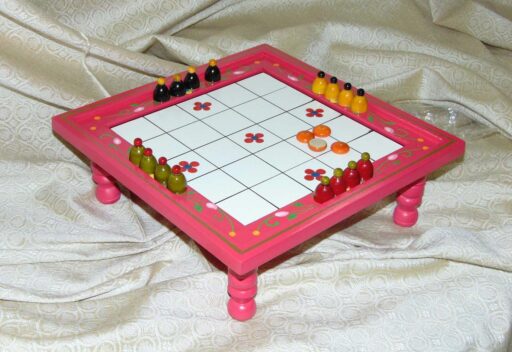Strategy games challenge the mind and require players to delve deep into the art of war, balancing aggression with defense, and mastering the terrain. ‘Unlocking Victory: Strategic Approaches to Mastering Strategy Games’ explores the intricate dance of strategic gameplay, drawing parallels between ancient wisdom and modern gaming tactics. By examining the core strategies of ‘Slay the Spire’ and the timeless principles of Sun Tzu’s ‘The Art of War,’ this article provides a blueprint for players aspiring to conquer their virtual adversaries.
Key Takeaways
- The core strategies of ‘Slay the Spire’ are deeply intertwined with the philosophies of ‘The Art of War,’ emphasizing adaptability, knowledge, and deception.
- ‘Slay the Spire’ players can enhance their gameplay by applying Sun Tzu’s principles, such as understanding oneself and the enemy, and the dynamics of attack and retreat.
- Mastering the art of deception and surprise in strategy games can lead to psychological dominance over opponents, influencing their decisions and actions.
- Strategic positioning and leveraging game terrain are critical for gaining an advantage, dictating the flow of battle, and outmaneuvering adversaries.
- The conclusion of the article ties together ancient strategies with modern gaming, illustrating how Sun Tzu’s wisdom remains relevant in the context of ‘Slay the Spire’ and beyond.
Delving into the Core Strategies of Slay the Spire

Understanding Your Enemy and Yourself
In the realm of Slay the Spire, knowledge is power. Understanding the strengths and weaknesses of both your character and your adversaries is crucial for formulating a winning strategy. By analyzing enemy patterns and tailoring your approach, you can turn the tide of battle in your favor.
To truly master the game, one must not only focus on the cards at hand but also on the subtle cues that hint at what the enemy might do next.
Here are some key aspects to consider:
- The types of enemies you will face and their attack patterns
- The strengths and limitations of your chosen character
- The synergy between your cards and relics
By keeping these factors in mind, players can create a dynamic strategy that adapts to each new challenge. Remember, in the art of war, deception plays a pivotal role. In Slay the Spire, players can apply this strategy by bluffing and baiting enemies, turning their own tactics against them. One of the key points of the book is the idea of deciphering enemy patterns, which is just as applicable in the game as it is on the ancient battlefield.
Adapting to Changing Circumstances
In the realm of strategy games like Slay the Spire, adaptability is the cornerstone of success. Players must be prepared to pivot their strategies in response to new threats and opportunities that arise during gameplay. This often involves making on-the-fly decisions that can drastically alter the course of the game.
- Recognize the patterns of your enemies to anticipate their moves.
- Develop contingency plans for various scenarios.
- Stay alert to the ever-changing game environment and adjust accordingly.
Adaptability is not just about reacting to changes; it’s about proactively seeking opportunities to gain an upper hand.
Being adaptable also means being prepared to exploit the weaknesses of your opponents. By staying flexible and responsive to the dynamics of the game, players can turn seemingly chaotic situations into opportunities for victory.
Mastering the Art of Deception and Surprise
In the intricate dance of strategy that is Slay the Spire, deception and surprise are pivotal in securing victory. By incorporating the wisdom of Sun Tzu, players can create a facade that misleads opponents, making them vulnerable to unexpected strategies. For instance, one might construct a deck that feigns weakness or simplicity, only to unleash a complex and devastating combo when the opponent least expects it.
The essence of deception lies in the unpredictability of your actions and the ability to keep the enemy in a state of uncertainty.
A player’s ability to adapt their tactics on the fly is crucial. This adaptability can be seen as a series of strategic layers, each designed to throw the enemy off balance:
- Layer One: Presenting an archetype that is commonly understood, lulling the enemy into a false sense of security.
- Layer Two: Introducing subtle variations that begin to sow doubt and confusion.
- Layer Three: Executing a well-timed pivot that capitalizes on the enemy’s misjudgments.
By mastering these layers of strategy, players can manipulate their opponents, leading them to make errors in judgment. This approach not only applies to Slay the Spire but also resonates in various competitive fields, from card games to business tactics, where the art of misdirection can be a powerful tool to gain the upper hand.
Understanding the Role of The Art of War in Strategic Gameplay

Applying Sun Tzu’s Principles to Modern Strategy Games
The teachings of Sun Tzu in "The Art of War" have transcended time, proving to be as relevant in the digital battlegrounds of modern strategy games as they were on the ancient fields of war. The human aspects of warfare and strategy, as outlined by Sun Tzu, are not confined to military engagements but extend to the realms of business, politics, and even the virtual confrontations in games like Slay the Spire.
One of the core strategies from Sun Tzu’s arsenal is the importance of knowing your enemy and yourself. This principle is vital in strategy games where understanding the strengths and weaknesses of both your adversary and your own position can be the difference between victory and defeat.
The ultimate victory in strategy games, much like in Sun Tzu’s philosophy, is to subdue the enemy without fighting. Achieving objectives with minimal conflict reflects a masterful application of strategy.
Sun Tzu’s emphasis on adaptability and flexibility is echoed in the dynamic gameplay of Slay the Spire. His famous quote, "In the midst of chaos, there is also opportunity," encapsulates the essence of finding victory in any situation, be it on the battlefield or within the intricate mechanics of a game.
The Importance of Self-Awareness and Situational Awareness
In the realm of strategy games, self-awareness and situational awareness are pivotal for securing victory. Self-awareness involves a deep understanding of one’s own capabilities, limitations, and tendencies within the game. It’s about recognizing when to push forward with an aggressive strategy or when to adopt a more defensive stance based on your current position and resources.
Situational awareness, on the other hand, is the ability to read the game environment and the moves of your opponents. It requires a player to be vigilant and responsive to the ever-changing dynamics of the game. This dual awareness is essential for anticipating challenges and seizing opportunities that arise during gameplay.
By cultivating both self-awareness and situational awareness, players can create a synergy that significantly enhances their strategic decision-making.
To illustrate the importance of these concepts, consider the following points:
- Recognizing your strengths and weaknesses allows for tailored strategies that capitalize on your advantages.
- Understanding the opponent’s strategy enables you to predict their moves and counteract effectively.
- Adapting to the game’s changing circumstances can turn the tide in your favor at critical moments.
- Positioning yourself advantageously within the game environment can provide a strategic edge.
Flexibility and Quick Thinking as Strategic Tools
In the realm of strategy games, flexibility and quick thinking are indispensable assets. Players who can swiftly adapt to new challenges and pivot their strategies on the fly often find themselves at a distinct advantage. This agility allows for the exploitation of fleeting opportunities and the mitigation of unforeseen threats.
- Recognize the importance of adaptability in response to dynamic game states.
- Develop the ability to quickly analyze and respond to opponents’ actions.
- Cultivate a mindset that embraces change and seeks strategic advantage.
The mastery of quick thinking and flexibility not only enhances gameplay but also translates into real-world applications, such as business or competitive sports, where strategic adjustments are crucial for success.
The principles of Sun Tzu, emphasizing the need to be fluid in tactics, resonate deeply within the context of modern strategy games. By being prepared to alter one’s approach in the face of new developments, players can maintain the upper hand. Slay the Spire, for instance, challenges gamers to continually adapt their deck and strategy, reinforcing the value of these skills in achieving victory.
Balancing Aggression and Defense in Slay the Spire

Striking the Right Balance for Optimal Gameplay
In the realm of Slay the Spire, the interplay between offense and defense forms the cornerstone of strategic success. Players must constantly evaluate their position, choosing when to unleash a barrage of attacks or to shore up defenses. This delicate equilibrium is not static; it shifts with every new encounter and card draw.
Balancing aggression and defense is not just about the cards in your hand, but also about reading the game’s rhythm and responding accordingly.
Understanding the nuances of your deck’s capabilities is essential. A deck heavy on attack may require a different approach than one built around defense or combos. Here’s a simple breakdown of strategic considerations:
- Assess the current situation and enemy capabilities
- Determine the optimal time for aggressive play
- Recognize when to build defenses and heal
- Adapt your strategy to the evolving game state
The discussion around the 4th character being ‘much too easy’ underscores the importance of this balance. A character that breezes through the game can indicate an imbalance that reduces the strategic challenge and enjoyment for some players.
The Dynamics of Attack and Retreat
In the intricate dance of combat within Slay the Spire, knowing when to press forward with an aggressive strategy or to fall back and defend is crucial. The balance between attack and retreat is a dynamic interplay that can determine the outcome of a game.
- Attack when you have a strong hand and the enemy’s vulnerabilities are exposed.
- Retreat to defend and rebuild when the enemy’s position is strong or you’re at a disadvantage.
- Evaluate your deck’s capabilities and the enemy’s actions at the end of each turn.
The key to mastering this balance is not just in the strength of your deck, but in the ability to read the game and adapt your strategy accordingly.
Understanding this dynamic requires constant vigilance and the willingness to shift tactics at a moment’s notice. It’s not just about the cards you play, but how and when you play them that weaves the narrative of victory or defeat.
Building a Versatile Deck for Every Scenario
To thrive in the ever-shifting landscape of Slay the Spire, a versatile deck is your greatest asset. It’s crucial to have a deck that can adapt to various challenges and opponents. This adaptability can be the difference between victory and defeat.
A well-rounded deck should include a balance of offense and defense, allowing you to respond effectively whether you’re pressing the advantage or weathering an onslaught. Consider the following points when building your deck:
- Synergy: Look for combinations of cards that work well together to maximize their impact.
- Flexibility: Include cards that are useful in multiple situations, not just niche scenarios.
- Balance: Ensure you have a good mix of attack, defense, and utility cards.
Remember, the key to success is not just the cards you choose, but how you use them to adapt to the game’s dynamics.
By following these principles and staying aware of the meta, you can construct a deck that stands strong against any adversary. As highlighted by HermitGamer, understanding your character and the best strategies is essential. Tailor your deck to your playstyle and the common strategies you face, and you’ll be well on your way to mastering Slay the Spire.
Harnessing the Concepts of Terrain and Positioning in Game Environments

Leveraging Game Mechanics to Gain Strategic Advantage
In the realm of strategy games, understanding and exploiting the game mechanics can be the difference between victory and defeat. Positioning oneself to capitalize on the strengths and weaknesses of both the player and the opponent is crucial. By mastering the intricacies of the game’s environment, players can create opportunities that may not be immediately apparent to their adversaries.
Strategic positioning within the game environment can often dictate the outcome of a match. Players must be acutely aware of the terrain and how it can be used to their advantage, whether it provides cover, high ground, or a bottleneck for enemy forces.
Here are some key aspects to consider when leveraging game mechanics:
- Understanding the rules and limitations of the game environment.
- Identifying key areas within the game that offer tactical advantages.
- Utilizing the terrain to control the flow of the game.
- Adapting to the dynamic changes within the game to maintain the upper hand.
Positional Play and Environmental Awareness
In the realm of strategy games, understanding the terrain is as crucial as the tactics you employ. The layout, topography, and obstacles within the game environment can dictate the success of your strategies. By mastering the art of positioning, players can create significant advantages that can turn the tide of battle.
Effective positional play requires a deep awareness of the game mechanics and how they interact with the environment. For instance, high ground may offer increased visibility and defensive bonuses, while narrow chokepoints can be used to funnel opponents into traps. Here’s a simple list to keep in mind when considering environmental factors:
- Evaluate the layout for strategic points
- Consider topography for defensive or offensive bonuses
- Identify obstacles that can be used to your advantage or must be circumvented
Being proactive and adaptable in response to changing game environments is essential. It’s not just about the position you hold but also about the potential positions you can move to as the game evolves.
This concept is not limited to physical battles but extends to various game environments, including business and sports. Strategic positioning, as highlighted by Sun Tzu, involves choosing the right battlefield and leveraging the terrain to one’s advantage. In the context of strategy games, this translates to understanding your strengths and weaknesses, as well as those of the competition, and positioning yourself to capitalize on those strengths.
Using Terrain to Dictate the Flow of Battle
In the realm of strategy games, mastering new terrain tactics can be a game-changer. Players who adeptly adjust to the landscape not only secure a vantage point but also create opportunities to surprise their opponents. For instance, in a game where elevation affects range and visibility, positioning units on higher ground can provide a significant advantage.
- Recognize the importance of high ground for increased range and visibility.
- Utilize choke points to control enemy movement.
- Exploit environmental hazards to your benefit.
By proactively seeking advantageous positions and responding to changes in the terrain, players can control the flow of battle and outmaneuver their adversaries.
Kane’s exclusive shortcut, a strategy that involves taking shortcuts and utilizing terrain changes, exemplifies the importance of terrain in strategic gameplay. This approach requires a deep understanding of the in-game elements and actions that can turn the tide of battle.
The Psychological Warfare of Bluffing and Predicting Opponents

The Art of Bluffing in Strategy Games
Bluffing is a pivotal element in the arsenal of any strategic game player. It’s about creating a false perception to manipulate the opponent’s actions to your advantage. In the realm of strategy games, this can mean the difference between victory and defeat.
- Recognize the patterns of your opponents.
- Decide when to project strength or vulnerability.
- Use misinformation to lead opponents astray.
Bluffing is not just about the cards you hold; it’s about the stories you tell with your gameplay.
Mastering bluffing techniques requires a keen understanding of both the game’s mechanics and the psychology of your adversaries. By predicting their moves and sowing doubt, you can control the flow of the game and emerge triumphant.
Anticipating Opponent Moves and Counter-Strategies
In the intricate dance of strategy games, anticipating an opponent’s moves is as crucial as executing your own. This foresight is not just about guessing but involves careful observation and analysis of the opponent’s tendencies, strengths, and weaknesses. By understanding these elements, players can devise counter-strategies that neutralize the opponent’s plans and secure a strategic advantage.
The key to mastery in strategy games lies not only in the moves you make but also in the moves you anticipate.
One effective method to anticipate moves is to consider the penultimate moves. This approach involves working backwards from the anticipated final move, analyzing all possible moves that could lead to that outcome. It’s a chess-like strategy that requires thinking several steps ahead, ensuring that you’re always one move ahead of the adversary.
- Observe the opponent’s patterns
- Analyze potential weaknesses
- Formulate adaptive counter-strategies
- Consider the penultimate moves
By integrating these practices into your gameplay, you can transform reactive moves into proactive strategies, always staying one step ahead in the psychological warfare of the game.
Psychological Tactics and Mind Games
In the intricate dance of strategy games, psychological tactics play a pivotal role in securing victory. Bluffing, a technique of creating false perceptions, can lead opponents to make errors in judgment. Similarly, the ability to predict an opponent’s moves allows for preemptive counter-strategies, turning the tide of battle in your favor.
- Bluffing: Creating false perceptions to mislead opponents
- Predictive Play: Anticipating opponent moves for strategic advantage
- Resource Management: Allocating assets to maintain pressure
- Psychological Warfare: Weakening opponent resolve to gain the upper hand
Mastering the mind game is not just about overt power, but also about the subtle art of influence and control. It’s about unraveling the psychology of strategy to outmaneuver the opposition.
The depth and excitement of the gaming experience are amplified by these tactics, from bluffing and predictive play to resource management and psychological warfare. Each move is a calculated step in the grand scheme of mental dominance, where the sharpest minds often claim victory.
CONCLUSION: MERGING ANCIENT STRATEGY WITH MODERN GAMING
As we have explored throughout this article, the ancient wisdom encapsulated in Sun Tzu’s "The Art of War" remains remarkably relevant in the realm of modern strategy games like Slay the Spire. By delving into the core strategies of the game and drawing parallels with the philosophical underpinnings of this timeless treatise, we uncover the enduring principles of strategy, preparation, adaptability, and patience. These principles are not only pivotal in achieving victory in the face of digital conflict and competition but also offer valuable insights for strategic thinking in various aspects of life. The synthesis of ancient strategic thought with the dynamic challenges of modern gaming creates a rich tapestry for players to navigate, ensuring that the art of strategy continues to evolve and thrive in contemporary gameplay. As players master these concepts, they not only become adept at the game but also cultivate a strategic mindset that transcends the virtual battlefield.
Frequently Asked Questions
How do the principles of ‘The Art of War’ apply to Slay the Spire?
The principles of ‘The Art of War’ by Sun Tzu, such as understanding strengths and weaknesses, adaptability, and deception, are highly relevant to Slay the Spire. Players can apply these strategies to effectively manage their decks, anticipate enemy moves, and adapt to evolving game scenarios for strategic advantage.
What are the philosophical similarities between ‘The Art of War’ and Slay the Spire?
Both ‘The Art of War’ and Slay the Spire emphasize strategy, preparation, adaptability, and patience. They share thematic parallels that highlight the importance of these principles in overcoming conflict and competition, making Sun Tzu’s wisdom applicable to the game.
Can understanding terrain and positioning give you an advantage in strategy games?
Yes, understanding terrain and positioning is crucial in strategy games. Leveraging game mechanics related to the environment can provide strategic advantages, dictate the flow of battle, and influence the outcome of engagements.
How important is flexibility and quick thinking in strategy games?
Flexibility and quick thinking are vital in strategy games. They allow players to adapt to unexpected obstacles and changing circumstances, which is essential for maintaining a competitive edge and making rapid, successful decisions.
What role does psychological warfare play in games like Slay the Spire?
Psychological warfare, such as bluffing and predicting opponent moves, plays a significant role in games like Slay the Spire. It involves outsmarting opponents by concealing true intentions, baiting errors, and employing mind games to gain an upper hand.
How can players balance aggression and defense effectively in Slay the Spire?
Players can balance aggression and defense by building a versatile deck, understanding the dynamics of attack and retreat, and striking an optimal balance based on the enemies and circumstances they face in the game.





